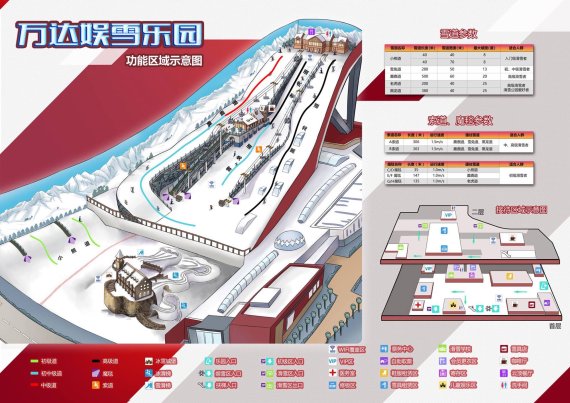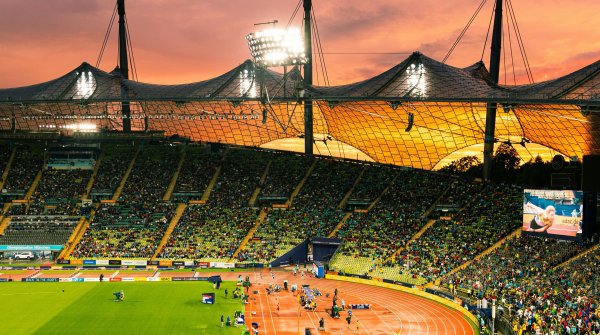
It’s still over four years until the 2022 Winter Olympics in Beijing, but the winter sports boom in China already knows no boundaries.
After China’s government decided in 2016 to build at least 240 new ski slopes in the country in an attempt to increase the number of winter sports participants from 6 to 300 million, the sport is no longer confined to the frosty northeast of the giant empire. There are also several ski areas now surrounding the capital, Beijing, even if they are just covered in artificial snow.
In the northeast, the beating heart of China’s winter sports, there is no lack of snow for a whole six months. Yabuli, Changbaishan and Harbin are institutions when it comes to ski and snowboard sports.
But a year has twelve months, and what doesn’t fit in China will be made to fit. And since the Chinese lack neither vision nor the spare change needed, the biggest indoor ski hall in the world opened in July 2017 in Harbin: the Wanda Indoor Ski and Winter Sports Resort.
The mega project is backed by the Wanda Group, whose founder, Wang Jianlin, presides over a fortune of 30.4 billion dollars, according to Forbes Magazine.
With his company, Jianlin holds a 20 percent share in the soccer club Atlético Madrid, owns the broadcasting rights to events such as the 2018 and 2022 Soccer World Cups due to purchasing the sports marketing agency Infront, and is the owner of the World Triathlon Corporation. Along with the small extract from its sports portfolio, the Wanda Group is the biggest operator of cinemas globally and the world’s largest private construction company.
So it’s no surprise that, after his decision to invest more in theme parks in China, Jianlin then developed the Harbin project on a correspondingly grand scale.

- Total area: approx. 80,000 square meters
- Six ski slopes – max. length 550 meters, max. width 60 meters
- Capacity: 3,000 persons
- Construction cost: 5.12 billion euros
- Construction time: 4 years
- Nine hotels
- Shopping mall
- Indoor ice rink
- Movie theater
- Outdoor theme park
The entire project is expected to employ around 30,000 people over the year, thus propelling it into the realm of comparison with theme parks such as Disneyland, for example.
For the first half-year, the operators anticipate about 400,000 visitors, who, for example, must pay around 62 euros for the all-inclusive package with equipment and day pass. A three-hour ticket is available for 38 euros.
Only one record remains unbroken by the Wanda Indoor Ski and Winter Sports Resort: the longest indoor ski slope. With 550 meters, Harbin’s slope ranks only fourth on the world stage. First place is still held by the Alpincenter in Bottrop, Germany, with 640 meters.
Harbin may not hold the title of the biggest indoor ski resort in the world for long, though; after all, the competition never sleeps. In Dubai, the completion of the Meydan One is planned for 2020. It is expected to considerably surpass the size of the Wanda Indoor Ski and Winter Sports Resort, and its longest slope is set to measure a full 1.2 kilometers.
 Sports BusinessThe future of the bike industry: 6 innovative bike stores
Sports BusinessThe future of the bike industry: 6 innovative bike stores
- ISPO awards
- Mountain sports
- Bike
- Design
- Retail
- Fitness
- Health
- ISPO Job Market
- ISPO Munich
- ISPO Shanghai
- Running
- Brands
- Sustainability
- Olympia
- OutDoor
- Promotion
- Sports Business
- ISPO Textrends
- Triathlon
- Water sports
- Winter sports
- eSports
- SportsTech
- OutDoor by ISPO
- Heroes
- Transformation
- Sport Fashion
- Urban Culture
- Challenges of a CEO
- Trade fairs
- Sports
- Find the Balance
- Product reviews
- Newsletter Exclusive Area
- Magazine





